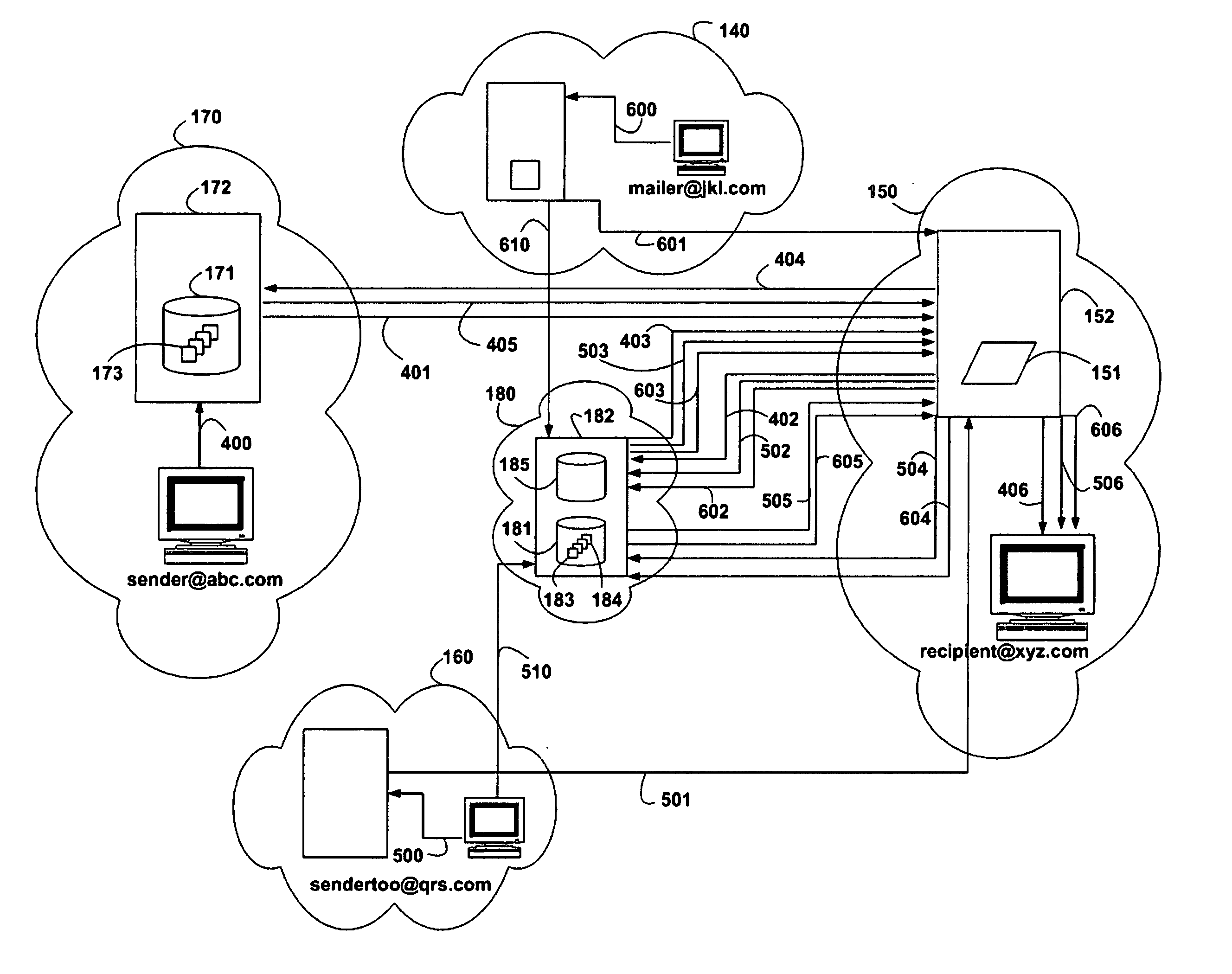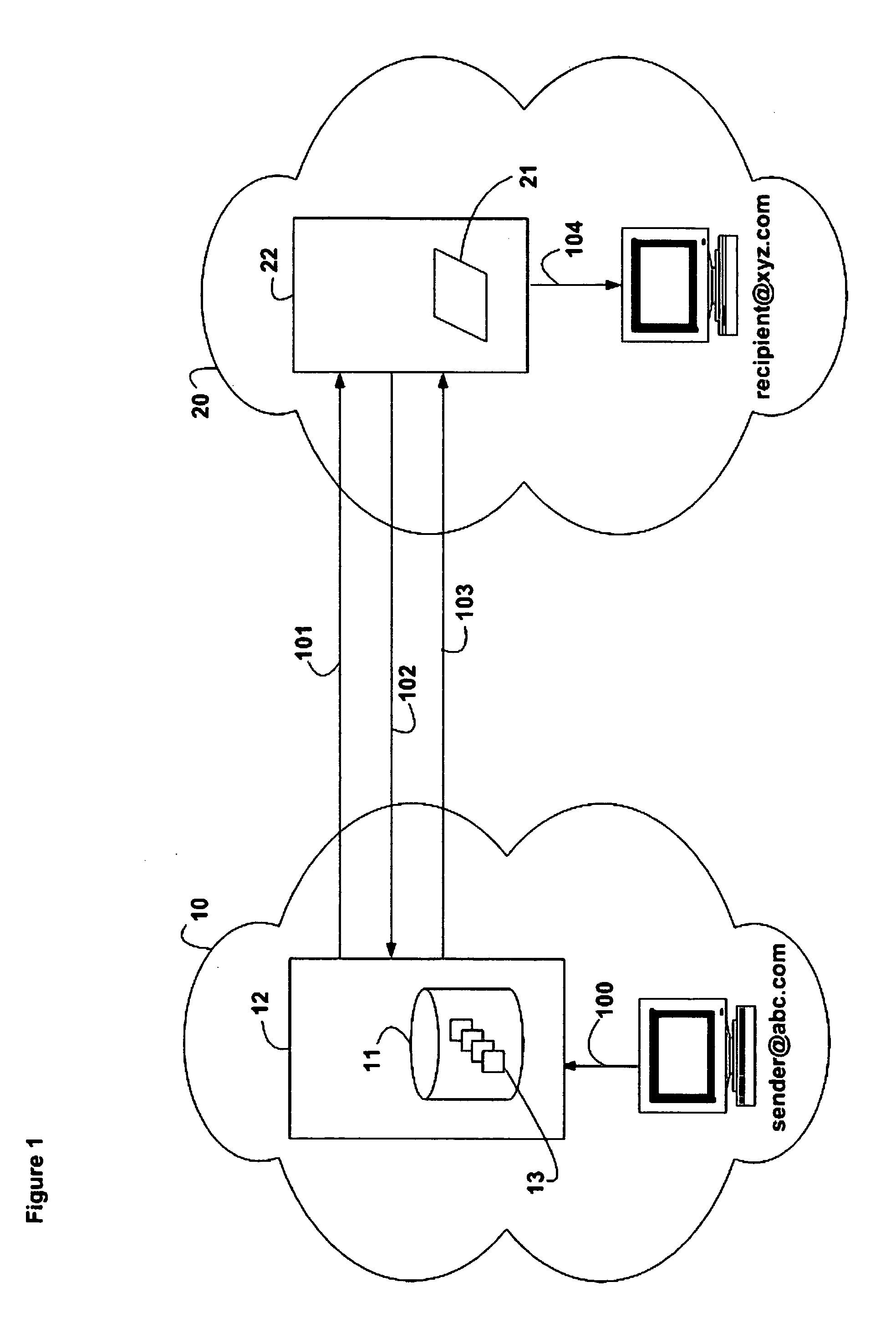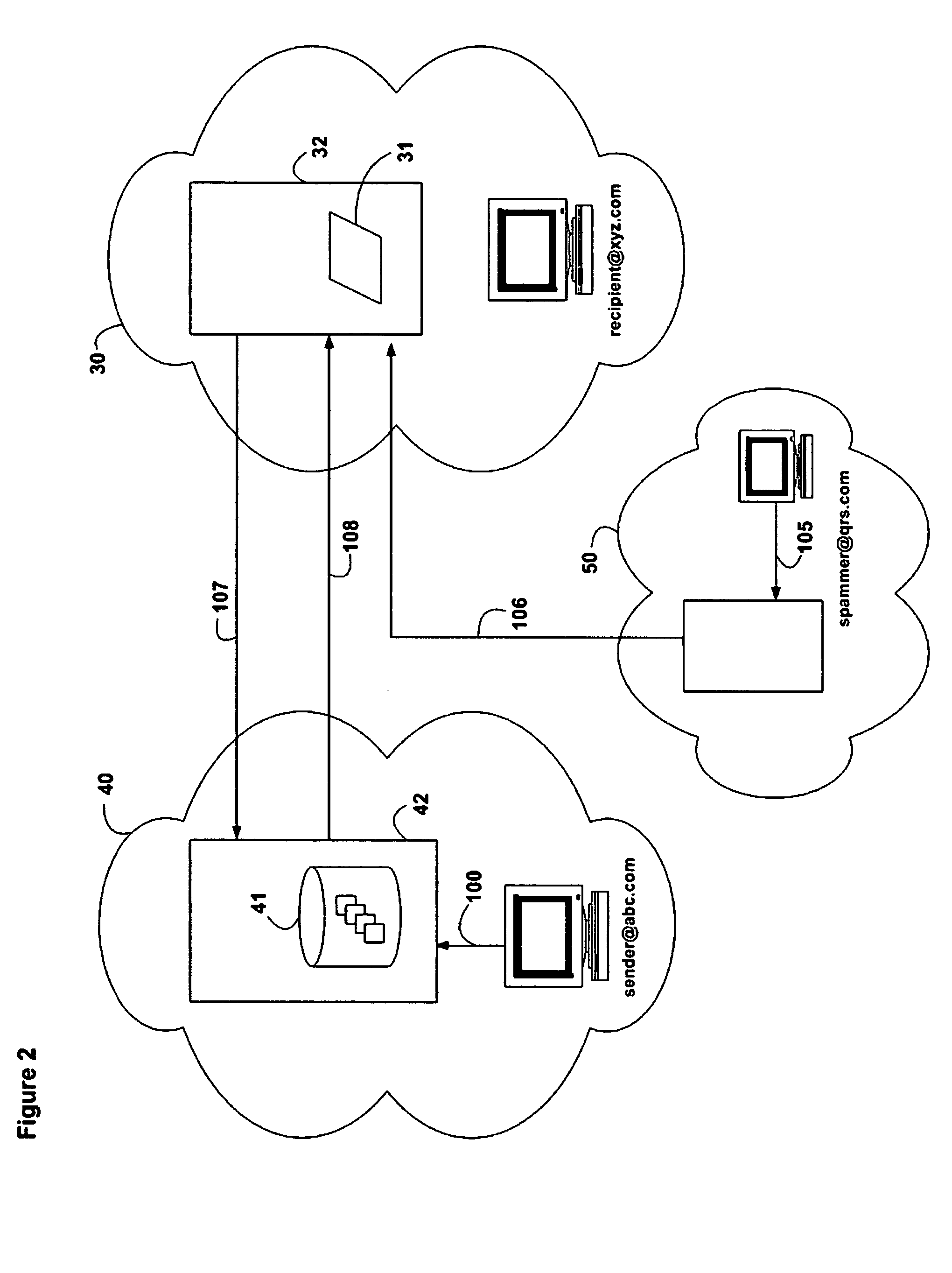Spam is unsolicited email that is typically transmitted to an extremely large number of email recipients.
Some Spam messages contain information or
graphics unsuitable for email users, particularly those who are children.
Unfortunately, this benefit to the sender of Spam comes at a considerable cost to the unwilling recipients of Spam messages.
Spamming costs companies millions of dollars in congested servers, expenses incurred employing measures to block the Spam email, and lost productivity due to email recipients having to wade through large amounts of Spam solicitations in order to find desired email.
Spoofing further compromises the ability of a Receiving Email
System to use blacklists or whitelists to block Spam because of the potential for blocking legitimate and desired email transmissions.
In such a circumstance, email systems which receive these Spam messages and which utilize blacklists are faced with a dilemma.
Although they could block all emails originating from the hotmail.com domain, this would have the undesirable effect of also blocking all non-Spam, desired emails coming from hotmail.com users.
The spoofing problem is further exacerbated by the inability of
system administrators to identify all potential domain names from which non-Spam email might originate.
Therefore, it has become increasingly difficult for
system administrators to avoid blocking legitimate email while simultaneously stopping “spoofed” Spam because they cannot
blacklist and block domain names that are heavily utilized by legitimate email senders and because they cannot be certain that some desired email will not be blocked if they add a previously unidentified
spamming domain name to a
blacklist.
However, where a spammer spoofs both the
origination address provided in the email headers and envelopes, but also the
domain name for the Sending Email
System during the SMTP communication transaction, this method fails.
Unfortunately, these types of Spam filters suffer from serious drawbacks.
Filtering programs typically require substantial
processing capacity.
Therefore, filtering programs may not be suitable for installation on a single email recipients' computer because the
processing capacity of the computer is unlikely to be sufficient to operate the filtering program as well as other applications.
However, even if the
processing capacity of the Receiving Email
System is substantial, it is still likely to be heavily taxed by a filtering program, particularly if the Receiving Email System receives a high volume of email and large number of suspected Spam messages.
Even when a Filtering Email System is used, however, these filtering systems are inefficient and are unable to consistently filter out inappropriate email while permitting the delivery of valid email.
This is true because the algorithms utilized, while complex, are not sufficiently sophisticated to fairly and fully analyze and assess message content.
The reply email requests that the original sender manually acknowledge the confirmation request in order for the sender to become a “trusted source.” This method relies on the inability of most
spamming systems to respond to reply emails and the virtual impossibility that the
spamming system could respond to a large number of them.
This creates additional, and typically unexpected and undesired, work on the part of the original sender.
Additionally, where the sender is unavailable or unwilling to send a reply, delivery of the message may be delayed or denied.
Second, these methods typically deliver, without requiring sender confirmation, any email messages which have originated from whitelisted domain names.
Finally, these challenge email methods require a second email delivery, typically sent to the message originator which could itself prompt the preparation of a challenge email and so on, leading to a
cascade of emails.
Even if this
cascade is pre-empted by some programmed interruption, however, the employment of this method still leads to a substantial increase in email traffic.
While the Leeds '465 system does reduce the strain on Receiving Email Systems, it is fallible because it requires that the secrecy and integrity of the
authorization codes be maintained.
 Login to View More
Login to View More  Login to View More
Login to View More 


